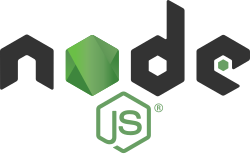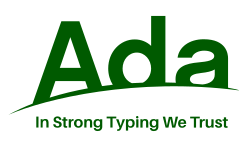Portal:Computer programming
Portal maintenance status: (September 2019)
|
The Computer Programming Portal
Computer programming or coding is the composition of sequences of instructions, called programs, that computers can follow to perform tasks. It involves designing and implementing algorithms, step-by-step specifications of procedures, by writing code in one or more programming languages. Programmers typically use high-level programming languages that are more easily intelligible to humans than machine code, which is directly executed by the central processing unit. Proficient programming usually requires expertise in several different subjects, including knowledge of the application ___domain, details of programming languages and generic code libraries, specialized algorithms, and formal logic.
Auxiliary tasks accompanying and related to programming include analyzing requirements, testing, debugging (investigating and fixing problems), implementation of build systems, and management of derived artifacts, such as programs' machine code. While these are sometimes considered programming, often the term software development is used for this larger overall process – with the terms programming, implementation, and coding reserved for the writing and editing of code per se. Sometimes software development is known as software engineering, especially when it employs formal methods or follows an engineering design process. (Full article...)
Selected articles - load new batch
-
Image 1

Kotlin (/ˈkɒtlɪn/) is a cross-platform, statically typed, general-purpose high-level programming language with type inference. Kotlin is designed to interoperate fully with Java, and the JVM version of Kotlin's standard library depends on the Java Class Library,
but type inference allows its syntax to be more concise. Kotlin mainly targets the JVM, but also compiles to JavaScript (e.g., for frontend web applications using React) or native code via LLVM (e.g., for native iOS apps sharing business logic with Android apps). Language development costs are borne by JetBrains, while the Kotlin Foundation protects the Kotlin trademark.
On 7 May 2019, Google announced that the Kotlin programming language had become its preferred language for Android app developers. Since the release of Android Studio 3.0 in October 2017, Kotlin has been included as an alternative to the standard Java compiler. The Android Kotlin compiler emits Java 8 bytecode by default (which runs in any later JVM), but allows targeting Java 9 up to 20, for optimizing, or allows for more features; has bidirectional record class interoperability support for JVM, introduced in Java 16, considered stable as of Kotlin 1.5.
Kotlin has support for the web with Kotlin/JS, through an intermediate representation-based backend which has been declared stable since version 1.8, released December 2022. Kotlin/Native (for e.g. Apple silicon support) has been declared stable since version 1.9.20, released November 2023. (Full article...) -
Image 2
MATLAB (Matrix Laboratory) is a proprietary multi-paradigm programming language and numeric computing environment developed by MathWorks. MATLAB allows matrix manipulations, plotting of functions and data, implementation of algorithms, creation of user interfaces, and interfacing with programs written in other languages.
Although MATLAB is intended primarily for numeric computing, an optional toolbox uses the MuPAD symbolic engine allowing access to symbolic computing abilities. An additional package, Simulink, adds graphical multi-___domain simulation and model-based design for dynamic and embedded systems.
As of 2020[update], MATLAB has more than four million users worldwide. They come from various backgrounds of engineering, science, and economics. As of 2017[update], more than 5000 global colleges and universities use MATLAB to support instruction and research. (Full article...) -
Image 3

Haskell (/ˈhæskəl/) is a general-purpose, statically typed, purely functional programming language with type inference and lazy evaluation. Haskell pioneered several programming language features such as type classes, which enable type-safe operator overloading, and monadic input/output (IO). It is named after logician Haskell Curry. Haskell's main implementation is the Glasgow Haskell Compiler (GHC).
Haskell's semantics are historically based on those of the Miranda programming language, which served to focus the efforts of the initial Haskell working group. The last formal specification of the language was made in July 2010, while the development of GHC continues to expand Haskell via language extensions.
Haskell is used in academia and industry. As of May 2021[update], Haskell was the 28th most popular programming language by Google searches for tutorials, and made up less than 1% of active users on the GitHub source code repository. (Full article...) -
Image 4

Erlang (/ˈɜːrlæŋ/ UR-lang) is a general-purpose, concurrent, functional high-level programming language, and a garbage-collected runtime system. The term Erlang is used interchangeably with Erlang/OTP, or Open Telecom Platform (OTP), which consists of the Erlang runtime system, several ready-to-use components (OTP) mainly written in Erlang, and a set of design principles for Erlang programs.
The Erlang runtime system is designed for systems with these traits:- Distributed
- Fault-tolerant
- Soft real-time
- Highly available, non-stop applications
- Hot swapping, where code can be changed without stopping a system.
-
Image 5

A 12-row/80-column IBM punched card from the mid-twentieth century
A punched card (also known as a punch card or Hollerith card) is a stiff paper-based medium used to store digital information through the presence or absence of holes in predefined positions. Developed from earlier uses in textile looms such as the Jacquard loom (1800s), the punched card was first widely implemented in data processing by Herman Hollerith for the 1890 United States Census. His innovations led to the formation of companies that eventually became IBM.
Punched cards became essential to business, scientific, and governmental data processing during the 20th century, especially in unit record machines and early digital computers. The most well-known format was the IBM 80-column card introduced in 1928, which became an industry standard. Cards were used for data input, storage, and software programming. Though rendered obsolete by magnetic media and terminals by the 1980s, punched cards influenced lasting conventions such as the 80-character line length in computing, and as of 2012, were still used in some voting machines to record votes. Today, they are remembered as icons of early automation and computing history. Their legacy persists in modern computing, notably influencing the 80-character line standard in command-line interfaces and programming environments. (Full article...) -
Image 6Artificial intelligence (AI) is the capability of computational systems to perform tasks typically associated with human intelligence, such as learning, reasoning, problem-solving, perception, and decision-making. It is a field of research in computer science that develops and studies methods and software that enable machines to perceive their environment and use learning and intelligence to take actions that maximize their chances of achieving defined goals.
High-profile applications of AI include advanced web search engines (e.g., Google Search); recommendation systems (used by YouTube, Amazon, and Netflix); virtual assistants (e.g., Google Assistant, Siri, and Alexa); autonomous vehicles (e.g., Waymo); generative and creative tools (e.g., language models and AI art); and superhuman play and analysis in strategy games (e.g., chess and Go). However, many AI applications are not perceived as AI: "A lot of cutting edge AI has filtered into general applications, often without being called AI because once something becomes useful enough and common enough it's not labeled AI anymore."
Various subfields of AI research are centered around particular goals and the use of particular tools. The traditional goals of AI research include learning, reasoning, knowledge representation, planning, natural language processing, perception, and support for robotics. To reach these goals, AI researchers have adapted and integrated a wide range of techniques, including search and mathematical optimization, formal logic, artificial neural networks, and methods based on statistics, operations research, and economics. AI also draws upon psychology, linguistics, philosophy, neuroscience, and other fields. Some companies, such as OpenAI, Google DeepMind and Meta, aim to create artificial general intelligence (AGI)—AI that can complete virtually any cognitive task at least as well as a human. (Full article...) -
Image 7In C++ computer programming, allocators are a component of the C++ Standard Library. The standard library provides several data structures, such as list and set, commonly referred to as containers. A common trait among these containers is their ability to change size during the execution of the program. To achieve this, some form of dynamic memory allocation is usually required. Allocators handle all the requests for allocation and deallocation of memory for a given container. The C++ Standard Library provides general-purpose allocators that are used by default; however, custom allocators may also be supplied by the programmer.
Allocators were invented by Alexander Stepanov as part of the Standard Template Library (STL). They were originally intended as a means to make the library more flexible and independent of the underlying memory model, allowing programmers to utilize custom pointer and reference types with the library. However, in the process of adopting STL into the C++ standard, the C++ standardization committee realized that a complete abstraction of the memory model would incur unacceptable performance penalties. To remedy this, the requirements of allocators were made more restrictive. As a result, the level of customization provided by allocators is more limited than was originally envisioned by Stepanov.
Nevertheless, there are many scenarios where customized allocators are desirable. Some of the most common reasons for writing custom allocators include improving performance of allocations by using memory pools, and encapsulating access to different types of memory, like shared memory or garbage-collected memory. In particular, programs with many frequent allocations of small amounts of memory may benefit greatly from specialized allocators, both in terms of running time and memory footprint. (Full article...) -
Image 8

tcsh and sh shell windows on a Mac OS X Leopard desktop
A Unix shell is a shell that provides a command-line user interface for a Unix-like operating system. A Unix shell provides a command language that can be used either interactively or for writing a shell script. A user typically interacts with a Unix shell via a terminal emulator; however, direct access via serial hardware connections or Secure Shell are common for server systems. Although use of a Unix shell is popular with some users, others prefer to use a windowing system such as desktop Linux distribution or macOS instead of a command-line interface.
A user may have access to multiple Unix shells with one configured to run by default when the user logs in interactively. The default selection is typically stored in a user's profile; for example, in the local passwd file or in a distributed configuration system such as NIS or LDAP. A user may use other shells nested inside the default shell.
A Unix shell may provide many features including: variable definition and substitution, command substitution, filename wildcarding, stream piping, control flow structures (condition-testing and iteration), working directory context, and here document. (Full article...) -
Image 9

Ruby is a general-purpose programming language. It was designed with an emphasis on programming productivity and simplicity. In Ruby, everything is an object, including primitive data types. It was developed in the mid-1990s by Yukihiro "Matz" Matsumoto in Japan.
Ruby is interpreted, high-level, and dynamically typed; its interpreter uses garbage collection and just-in-time compilation. It supports multiple programming paradigms, including procedural, object-oriented, and functional programming. According to the creator, Ruby was influenced by Perl, Smalltalk, Eiffel, Ada, BASIC, and Lisp. (Full article...) -
Image 10

Rust is a general-purpose programming language emphasizing performance, type safety, and concurrency. It enforces memory safety, meaning that all references point to valid memory. It does so without a conventional garbage collector; instead, memory safety errors and data races are prevented by the "borrow checker", which tracks the object lifetime of references at compile time.
Rust supports multiple programming paradigms. It was influenced by ideas from functional programming, including immutability, higher-order functions, algebraic data types, and pattern matching. It also supports object-oriented programming via structs, enums, traits, and methods.
Software developer Graydon Hoare created Rust as a personal project while working at Mozilla Research in 2006. Mozilla officially sponsored the project in 2009. The first stable release of Rust, Rust 1.0, was published in May 2015. Following a large layoff of Mozilla employees in August 2020, multiple other companies joined Mozilla in sponsoring Rust through the creation of the Rust Foundation in February 2021. In December 2022, Rust became the first language other than C and assembly to be supported in the development of the Linux kernel. (Full article...) -
Image 11Allen at the Flying Heritage Collection in 2013
Paul Gardner Allen (January 21, 1953 – October 15, 2018) was an American businessman, computer programmer, and investor. He co-founded Microsoft Corporation with his childhood friend Bill Gates in 1975, which was followed by the microcomputer revolution of the 1970s and 1980s. Allen was ranked as one of the richest people in American history by Forbes with an estimated net worth of $20.3 billion at the time of his death in October 2018.
Allen quit from day-to-day work at Microsoft in early 1983 after a Hodgkin lymphoma diagnosis, remaining on its board as vice-chairman. He and his sister, Jody Allen, founded Vulcan Inc. in 1986, a privately held company that managed his business and philanthropic efforts. At the time of his death, he had a multi-billion dollar investment portfolio, including technology and media companies, scientific research, real estate holdings, private space flight ventures, and stakes in other sectors. He owned the Seattle Seahawks of the National Football League and the Portland Trail Blazers of the National Basketball Association, and was part-owner of the Seattle Sounders FC of Major League Soccer. Under Allen's helm, the Seahawks won Super Bowl XLVIII and made it to two other Super Bowls (XL and XLIX). In 2000 he resigned from his position on Microsoft's board and assumed the post of senior strategy advisor to the company's management team.
Allen founded the Allen Institutes for Brain Science, Artificial Intelligence, and Cell Science, as well as companies like Stratolaunch Systems and Apex Learning. He gave more than $2 billion to causes such as education, wildlife and environmental conservation, the arts, healthcare, and community services. In 2004, he funded the first crewed private spaceplane with SpaceShipOne. He received numerous awards and honors, and was listed among the Time 100 Most Influential People in the World in 2007 and 2008. (Full article...) -
Image 12

Node.js is a cross-platform, open-source JavaScript runtime environment that can run on Windows, Linux, Unix, macOS, and more. Node.js runs on the V8 JavaScript engine, and executes JavaScript code outside a web browser.
Node.js lets developers use JavaScript to write command line tools and server-side scripting. The ability to run JavaScript code on the server is often used to generate dynamic web page content before the page is sent to the user's web browser. Consequently, Node.js represents a "JavaScript everywhere" paradigm, unifying web-application development around a single programming language, as opposed to using different languages for the server- versus client-side programming.
Node.js has an event-driven architecture capable of asynchronous I/O. These design choices aim to optimize throughput and scalability in web applications with many input/output operations, as well as for real-time Web applications (e.g., real-time communication programs and browser games). (Full article...) -
Image 13

The Greek lowercase omega (ω) character is used to represent Null in database theory.
In SQL, null or NULL is a special marker used to indicate that a data value does not exist in the database. Introduced by the creator of the relational database model, E. F. Codd, SQL null serves to fulfill the requirement that all true relational database management systems (RDBMS) support a representation of "missing information and inapplicable information". Codd also introduced the use of the lowercase Greek omega (ω) symbol to represent null in database theory. In SQL,NULLis a reserved word used to identify this marker.
A null should not be confused with a value of 0. A null indicates a lack of a value, which is not the same as a zero value. For example, consider the question "How many books does Adam own?" The answer may be "zero" (we know that he owns none) or "null" (we do not know how many he owns). In a database table, the column reporting this answer would start with no value (marked by null), and it would not be updated with the value zero until it is ascertained that Adam owns no books.
In SQL, null is a marker, not a value. This usage is quite different from most programming languages, where a null value of a reference means it is not pointing to any object. (Full article...) -
Image 14

Ada is a structured, statically typed, imperative, and object-oriented high-level programming language, inspired by Pascal and other languages. It has built-in language support for design by contract (DbC), extremely strong typing, explicit concurrency, tasks, synchronous message passing, protected objects, and non-determinism. Ada improves code safety and maintainability by using the compiler to find errors in favor of runtime errors. Ada is an international technical standard, jointly defined by the International Organization for Standardization (ISO), and the International Electrotechnical Commission (IEC). As of May 2023[update], the standard, ISO/IEC 8652:2023, is called Ada 2022 informally.
Ada was originally designed by a team led by French computer scientist Jean Ichbiah of Honeywell under contract to the United States Department of Defense (DoD) from 1977 to 1983 to supersede over 450 programming languages then used by the DoD. Ada was named after Ada Lovelace (1815–1852), who has been credited as the first computer programmer. (Full article...) -
Image 15Prolog is a logic programming language that has its origins in artificial intelligence, automated theorem proving, and computational linguistics.
Prolog has its roots in first-order logic, a formal logic. Unlike many other programming languages, Prolog is intended primarily as a declarative programming language: the program is a set of facts and rules, which define relations. A computation is initiated by running a query over the program.
Prolog was one of the first logic programming languages and remains the most popular such language today, with several free and commercial implementations available. The language has been used for theorem proving, expert systems, term rewriting, type systems, and automated planning, as well as its original intended field of use, natural language processing. (Full article...)
Selected images
-
Image 1Margaret Hamilton standing next to the navigation software that she and her MIT team produced for the Apollo Project.
-
Image 2Grace Hopper at the UNIVAC keyboard, c. 1960. Grace Brewster Murray: American mathematician and rear admiral in the U.S. Navy who was a pioneer in developing computer technology, helping to devise UNIVAC I. the first commercial electronic computer, and naval applications for COBOL (common-business-oriented language).
-
Image 4Partial view of the Mandelbrot set. Step 1 of a zoom sequence: Gap between the "head" and the "body" also called the "seahorse valley".
-
Image 5Stephen Wolfram is a British-American computer scientist, physicist, and businessman. He is known for his work in computer science, mathematics, and in theoretical physics.
-
Image 6A view of the GNU nano Text editor version 6.0
-
Image 7A head crash on a modern hard disk drive
-
Image 8Deep Blue was a chess-playing expert system run on a unique purpose-built IBM supercomputer. It was the first computer to win a game, and the first to win a match, against a reigning world champion under regular time controls. Photo taken at the Computer History Museum.
-
Image 9This image (when viewed in full size, 1000 pixels wide) contains 1 million pixels, each of a different color.
-
Image 11A lone house. An image made using Blender 3D.
-
Image 13GNOME Shell, GNOME Clocks, Evince, gThumb and GNOME Files at version 3.30, in a dark theme
-
Image 14Partial map of the Internet based on the January 15, 2005 data found on opte.org. Each line is drawn between two nodes, representing two IP addresses. The length of the lines are indicative of the delay between those two nodes. This graph represents less than 30% of the Class C networks reachable by the data collection program in early 2005.
-
Image 16Ada Lovelace was an English mathematician and writer, chiefly known for her work on Charles Babbage's proposed mechanical general-purpose computer, the Analytical Engine. She was the first to recognize that the machine had applications beyond pure calculation, and to have published the first algorithm intended to be carried out by such a machine. As a result, she is often regarded as the first computer programmer.
-
Image 17Output from a (linearised) shallow water equation model of water in a bathtub. The water experiences 5 splashes which generate surface gravity waves that propagate away from the splash locations and reflect off of the bathtub walls.
-
Image 18An IBM Port-A-Punch punched card
Did you know? - load more entries

- ... that Phil Fletcher as Hacker T. Dog caused Lauren Layfield to make the "most famous snort" in the United Kingdom in 2016?
- ... that Cornell University's student-oriented programming language dialect was made available to other universities but required a "research grant" payment in exchange?
- ... that a pink skin for Mercy in the video game Overwatch helped raise more than $12 million for breast cancer research?
- ... that a "hacker" with blog posts written by ChatGPT was at the center of an online scavenger hunt promoting Avenged Sevenfold's album Life Is but a Dream...?
- ... that the study of selection algorithms has been traced to an 1883 work of Lewis Carroll on how to award second place in single-elimination tournaments?
- ... that both Thackeray and Longfellow bought paintings by Fanny Steers?
Subcategories
WikiProjects
- There are many users interested in computer programming, join them.
Computer programming news
No recent news
Topics
Related portals
Associated Wikimedia
The following Wikimedia Foundation sister projects provide more on this subject:
-
Commons
Free media repository -
Wikibooks
Free textbooks and manuals -
Wikidata
Free knowledge base -
Wikinews
Free-content news -
Wikiquote
Collection of quotations -
Wikisource
Free-content library -
Wikiversity
Free learning tools -
Wiktionary
Dictionary and thesaurus











































